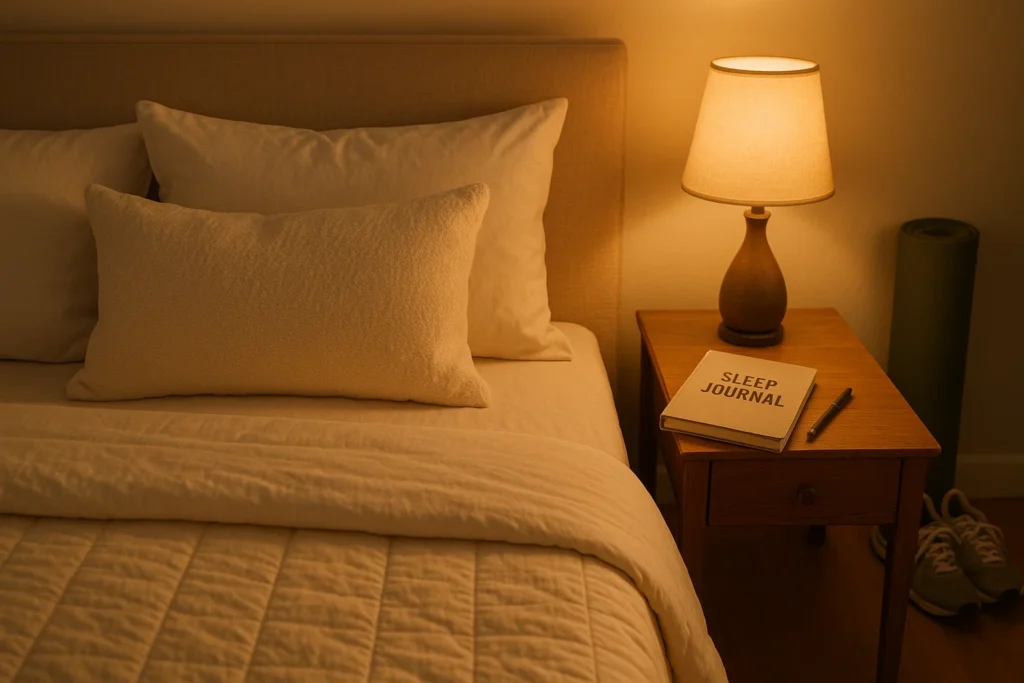Those having problems with sleeplessness? You are not alone. Millions of people take on insomnia that causes fatigue during the day, lack of concentration and quality of life. Most medications are extremely proposed; however, natural alternatives are also necessary to many. Exercise is one of such alternatives. But is it really effective? In the latest systematic review and network meta-analysis published in the BMJ Evidence-Based Medicine in 2024, the research throws light on this question and helps people willing to enhance their sleep in a natural way.
What is Systematic Review and Network Meta-Analysis?
A systematic review is a powerful procedure through which all accessible examination is compiled and assessed in order to give an overall view on a particular topic. It entails the specification of body of studies that are relevant, their evaluation, and synthesis of findings. A network meta-analysis does that in addition to pulling in various interventions and comparing them even when they were not compared directly in the individual studies. In this method, researchers are able to compare the treatments and know how effective they are.
In the present case, the results of 22 to 23 randomized controlled trials based on 1348 individuals with insomnia were compared. Its aim was to determine the effects of different exercise interventions on the outcomes of sleep, which includes both objective (such as polysomnography or test that measures the activity of brain waves) and subjective (such as sleep diaries) measurement.
Key Findings of the Study
The review found that exercise interventions generally have positive effects on sleep outcomes for people with insomnia. Specifically, the study reported improvements in the following sleep metrics:
| Sleep Metric | Definition | Findings |
|---|---|---|
| Total Sleep Time (TST) | Total time spent asleep | Exercise increased TST compared to control groups. |
| Sleep Onset Latency (SOL) | Time taken to fall asleep | Exercise reduced SOL, helping people fall asleep faster. |
| Sleep Efficiency (SE) | Percentage of time in bed spent asleep | Exercise improved SE, though results showed some variability. |
| Wake After Sleep Onset (WASO) | Time spent awake after initially falling asleep | Exercise decreased WASO, reducing nighttime wakefulness. |
These changes have been found to be experienced both on objective scale (e.g. polysomnography) and subjective scale (e.g. sleep diaries). Nevertheless, the study observed that there was a variation in the findings. An example is that total sleep time and sleep onset latency were low in heterogeneity (consistent results between studies) when measured objectively whereas sleep efficiency and wake after sleeping onset were in higher heterogeneity (consistent results). This implies that, in as much as exercise is good, the effect might be subject to the measurement of the sleep factor and the method used.
The results of the study were quite strong, and sensitivity and subgroup analyses proved it. Such analyses indicated that the findings remained consistent across variations in the definition of insomnia (e.g., categorization per the DSMIV-TR vs. the ICSD-2) or the extent of exercise procedures (e.g., 1-3 months and more).
The Way Exercise Can Assist Insomnia
A disorder in which a person has problems with either falling or staying asleep or both, when there is an ample chance to do it, is known as insomnia. It may cause fatigue, irritability and even more dangerous, accidents. Cognitive behavioral therapy of insomnia (CBT-I) and medications have been used traditionally, although they are not always appropriate to all people because they have side effects or they can be difficult to access.
There is an alternative to exercise. Exercise is attributed to decreasing stress, anxiety and depression- the causes of insomnia. It can also stabilize your rhythms of the body (your internal clock), makes you relax and makes your body healthier on the whole, which is all beneficial to the quality of sleep. There might have been many different types of exercises used in the review, which may include:
Aerobic activity: Walking, running, cycling or swimming.
Resistance training– bodyweight training or weight training.
Mind-body trainings: Yoga, tai chi or stretching.
These types may influence a sleeping process in different ways, and further studies might help to figure out which one is the most efficient in case of insomnia.

Constraints and Future Studies
Although the review is a credible indicator of the non-drug approach of exercising insomnia, it enjoys limitations. The study also had many forms of exercise intervention, and it is not possible to say what form of exercise is the most effective or how long the exercise should last. Also, the inconsistency in certain sleep variables implies that people might respond differently to exercise. In future it can be made the research:
Determining the most beneficial types of exercise (e.g. aerobic or yoga).
Developing the best exercise protocols in regard to duration and frequency.
Evaluation of long-term outcomes to ascertain that there are the long-term gains.
Workable Suggestions on Exercise to Increase Sleep
When you are thinking of using exercise to fix your sleeping problems, here are some of the practical pieces of advice you need to embrace:
Find something fun: Find something you enjoy, be it walking, dancing or yoga. Fun makes you likely to adhere to it.
Take it one step at a time: For beginners only take one step at a time and building up gradually by starting with activities of low intensity like 30 minutes brisk walking per day, five days a week.
Time yourself correctly: You should not do severe exercises before bedtime, as it is likely to stimulate you and make you fall asleep with more difficulties. To work out earlier in the day preferably in the morning or in the afternoon.
Combine with sleep hygiene: This includes keeping to a regular bedtime, making a dark and quiet bed, restricting caffeine, alcohol or use of the screen before at night.
Conclusion
The evidence that exercise became a convincing, natural alternative to enhance sleep among individuals with insomnia is reported in this systematic review and network meta-analysis. Exercise has the benefit of being a possible alternative to pills with its ability to generate an increase in total sleep time as well as time to falling asleep and increasing the overall sleep quality. There is more research to be done to make recommendations more precise, but integrating regular physical activity into your lifestyle may become a game-changer to improve sleep.
Did you ever turn to exercise as a way of getting a better sleep? Write your experiences in the comment section below! And when you think of a new exercise routine, be sure to consult a medical person, more so when you have any problems already.
Reference:
Tseng, P., & Lin, P. Y. (2024). Effects of various exercise interventions in insomnia patients: A systematic review and network meta-analysis. BMJ Evidence-Based Medicine.
https://ebm.bmj.com/content/early/2025/07/09/bmjebm-2024-113512

